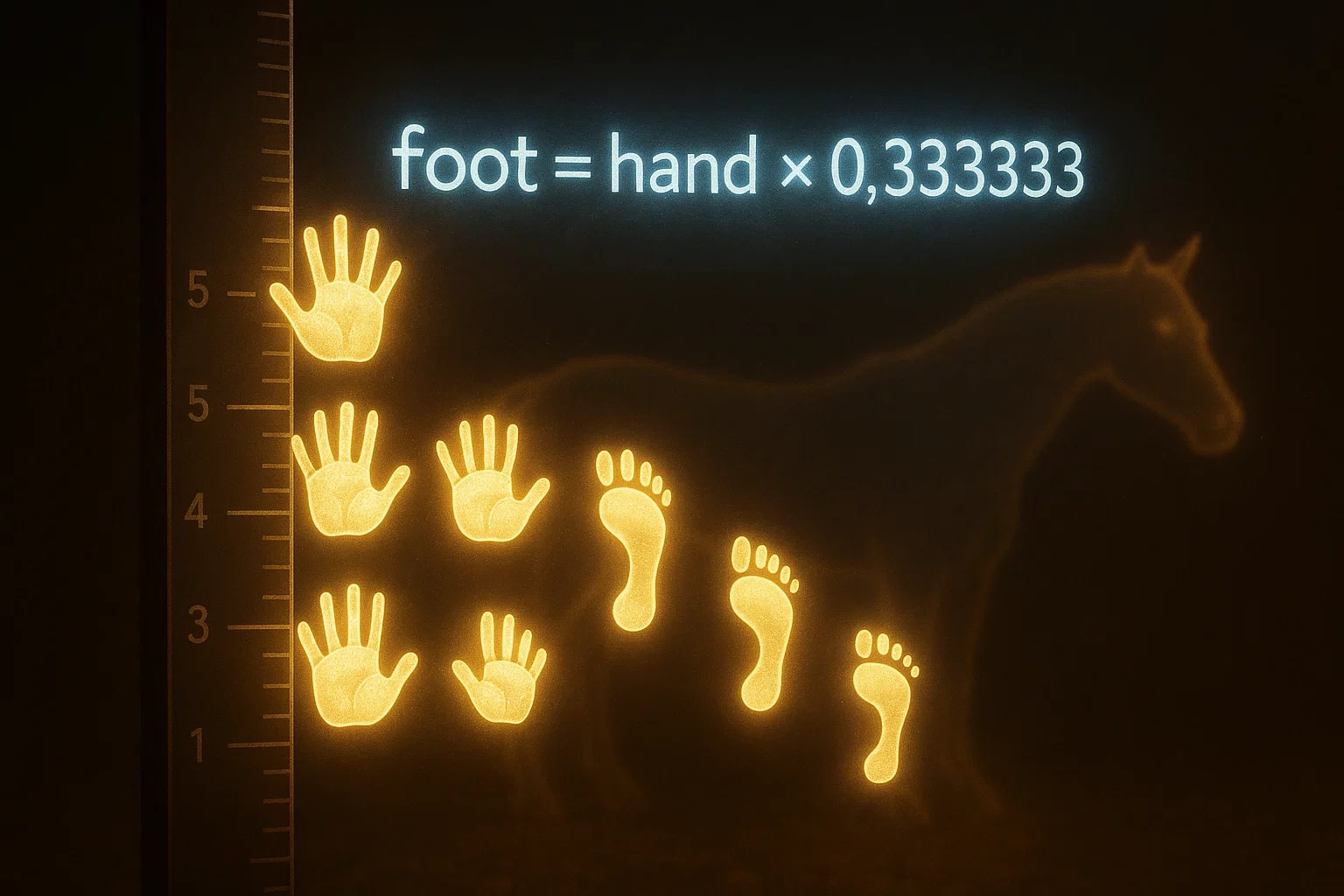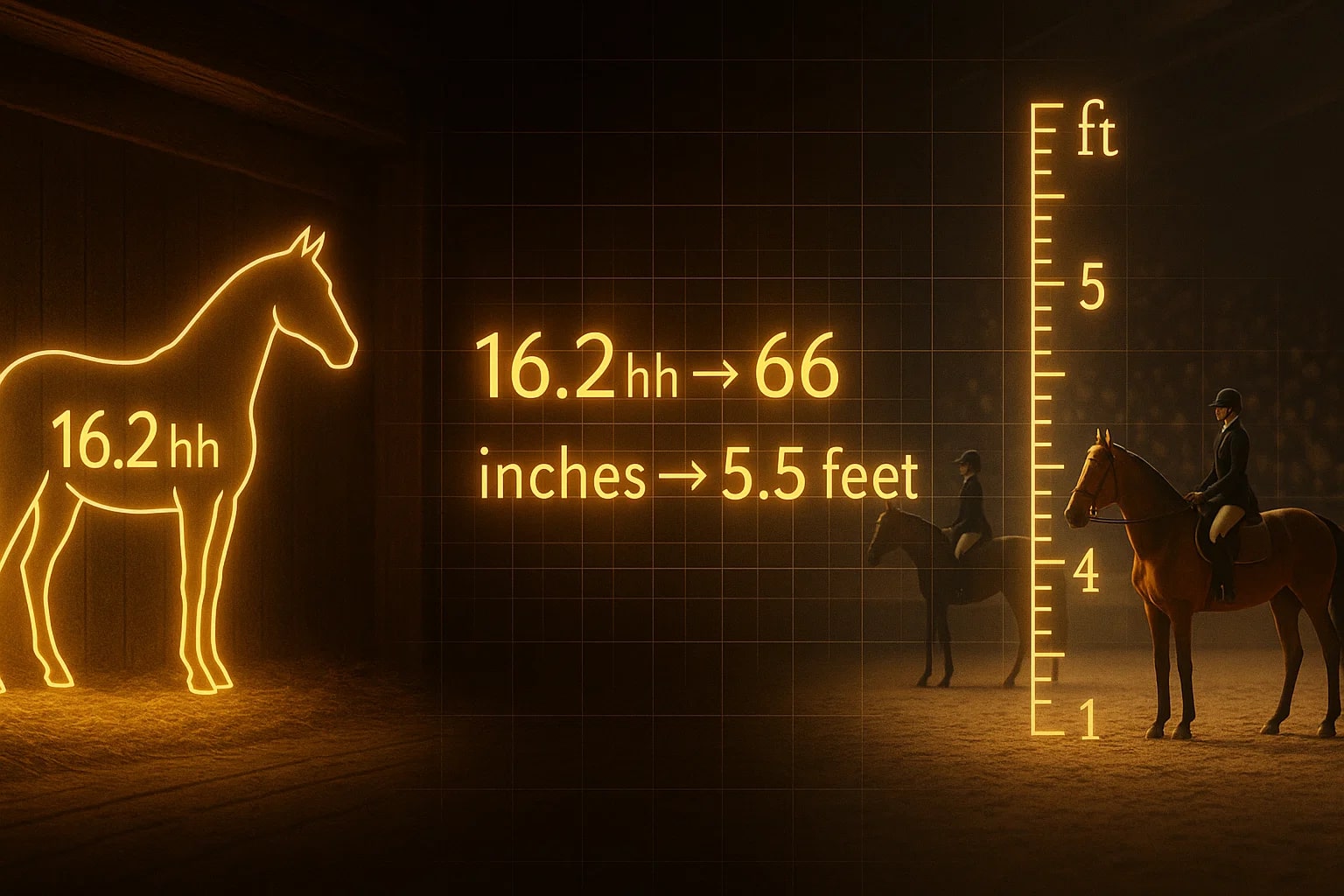hand to foot – How to convert hh to ft
Converting from hand to foot is important in equestrian contexts, where horse heights are traditionally measured in hands. While the hand is a historic unit, the foot remains part of the imperial system and is widely used in daily life and construction. Knowing how to convert hh to ft helps you interpret horse measurements with clarity and relate them to everyday units.

What is a Hand (hh)?
A hand is a traditional unit of length equal to 4 inches or 0.333 feet. It is primarily used today for measuring horse height, with the measurement taken at the withers (the ridge between the shoulders).
What is a Foot (ft)?
The foot is an imperial unit of length equal to 12 inches or 0.3048 meters. It is widely used in the United States, the UK, and other regions for personal height, building dimensions, and sports.
How to Convert hh to ft
The formula is:
foot = hand × 0.333333
For example, let’s convert 15 hh into feet:
foot = 15 × 0.333333 = 5 ft
So, a horse that stands 15 hands tall is 5 feet at the withers.
For more conversion options, you can use the Length Converter or explore the complete Conversion Tools.
Do you know?
-
The hand as a measurement dates back to ancient Egypt, where it was based on the width of a human palm.
-
In 1541, King Henry VIII of England officially standardized the hand at exactly 4 inches.
-
The foot, used by many civilizations, was not standardized until 1959 when it was fixed at 0.3048 meters.
-
Horse registries worldwide still use hands, even when other industries have shifted to metric measurements.
Horses and Their Heights
Hands remain central in equestrian culture. A horse listed as 16.2 hh is 16 hands and 2 inches tall, which equals about 66 inches or 5.5 feet. This notation is unique to the horse world and can be confusing without conversion.
By converting hands to feet, breeders, riders, and veterinarians can communicate horse heights more clearly across different systems. It also helps those unfamiliar with equestrian terms to visualize size more easily.

Tradition Meets Practicality
The conversion from hand to foot keeps alive a centuries-old tradition while making it understandable in modern terms. Horses may still be measured in hands, but feet provide a familiar frame of reference for anyone outside equestrian circles.
By using this simple formula, you can confidently bridge two units that, while very different in origin, remain tied together in practice.

